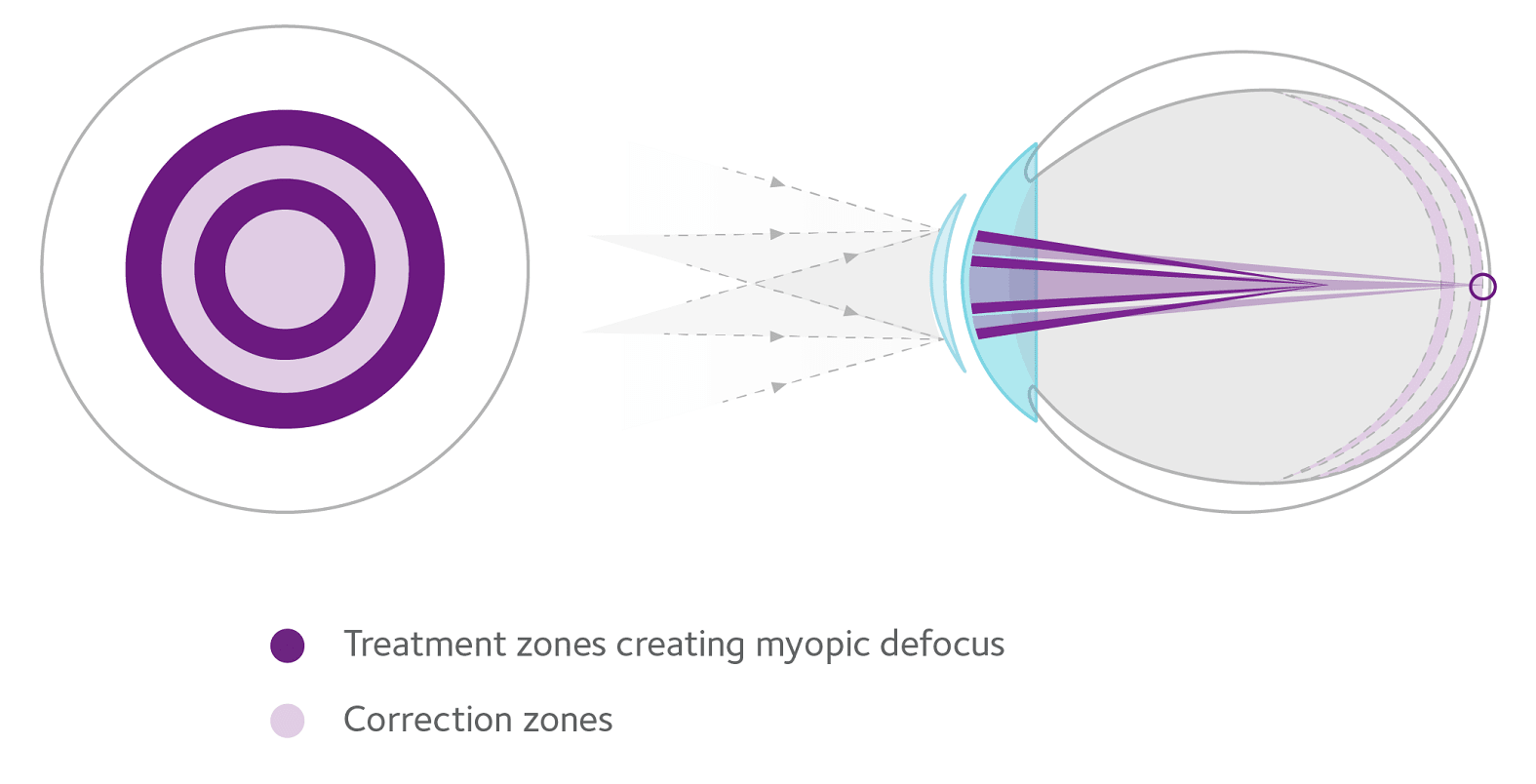 |
| Accommodative amplitude, lag and facility was not affected long-term for children wearing multifocal contact lenses for myopia control. Photo: CooperVision. Click image to enlarge. |
Among the concerns on doctors’ minds when contemplating myopia management interventions is the potential adverse effects of a given therapy—always a concern in any clinical scenario but all the more so in a developing child. Although use of multifocal contact lenses can alter accommodation somewhat, no long-term study had previously evaluated if the modality could affect a patient’s ability to read comfortably and accurately over a prolonged period. To investigate this potential effect, study researchers compared the accommodative response to a 3D stimulus between single vision, +1.50D add and +2.50D add multifocal contact lens wearers during three years of wear. Accommodative amplitude, lag and facility between the three groups were then compared after 4.7 years of wear on average.
Participants in the landmark BLINK study, totaling 294 children aged seven to 11, were randomly assigned to wear one of the three types of soft multifocal soft lenses: single vision, +1.50D add or +2.50D add center-distance. Accommodative response to a 3D stimulus was recorded at baseline and annually for three years. Objective accommodative amplitudes, lead/lag and binocular facility with ±2.00D flippers were measured after 4.7 years.
The strength of the lenses did seem to have an intermediate effect on accommodation before the final measurements at 4.7 years. The +2.50D add lens wearers saw lower accommodative response by at least 0.50D to a 3D stimulus over single vision wearers for three years; the +1.50 add wearers also experienced lower accommodative response of almost 0.75D over single vision wearers, but this reduced until there was no difference between these two groups at final visit and persisted for only two years.
After adjusting for clinic site, sex and age group, there were no clinically relevant differences of the three groups for accommodative amplitude, accommodative lag or accommodative facility after the average 4.7 years of wear.
Mapping their results onto other studies, the researchers note that accommodative amplitude was not affected by long-term multifocal lens wear, as seen in prior literature, but the accommodative amplitudes measured in this study were lower overall than in two previous studies. They attribute this difference to their use of objectively measuring amplitudes, whereas the other two studies measured subjectively, which can overestimate accommodative amplitude.
Only one previously conducted study looked at long-term multifocal contact lens wear in children. During a contralateral trial, the children wore one single vision lens and one dual focus lens in the other eye for 10 months, with no resultant use of the add power reducing accommodation, even after the dual focus lens was worn in one eye for 10 months.
Accommodative facility has been studied regarding its effect after wearing multifocal contacts, but only in short-term studies of less than two weeks. These reports indicated reduced accommodative facility does exist in young adult multifocal wearers, but the results of the current study do not indicate any long-term reduction of accommodative facility. As such, accommodative facility may be reduced while wearing multifocals, but after nearly five years, binocular accommodative facility did not display difference for single vision vs. multifocal wearers, likely due to wearing the treatment and not because of changes in accommodative ability of participants.
The authors concluded in their paper that “eyecare practitioners prescribing multifocal contact lenses for myopia control should not be concerned about causing long-term effects on accommodation.”
Chandler MA, Robich ML, Jordan LA, et al. Accommodation in children after 4.7 years of multifocal contact lens wear in the BLINK Study randomized clinical trial. Optom Vis Sci. June 26, 2023. [Epub ahead of print]. |

